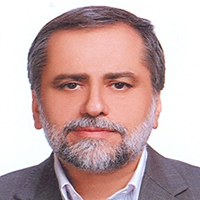The Position of the "Representative Concentration Pathways" Scenario in the Evolution of Climate Change Scenarios
The progress of the past decades in science and technology and the observations related to the increase in the average temperature of the earth have strengthened the theory of greenhouse gases and the emphasis of governments in pursuing the goals of stabilizing the temperature of the earth up to 2 degrees Celsius and trying to maintain it up to 1.5 degrees Celsius. With the approach of reducing greenhouse gas emissions. In this research, by briefly introducing the theory of climate change, the parameters of climate change during the past decades have been examined, and the history of international actions in pursuit of the goals of stabilizing the temperature of the earth has been examined. In the following, the position and importance of using scenarios as one of the effective tools in climate change research has been discussed and the available scenarios in climate change research are divided into four categories: "Emission Scenarios", "Climate Scenarios", "Environmental Scenarios" and "vulnerability scenarios" have been investigated. Also, the scenario development process in climate change research, and specifically the scenarios of the Inter-State Climate Change Commission from the first generation to the fourth generation, were evaluated and compared. Specifically, the difference between the fourth generation of these scenarios, which has been a new paradigm in scenario planning, in changing from a serial process to a parallel process, was examined and the importance and necessity of preparing this scenario in the field of climate change was evaluated. In the end, the scenarios of "Representative Concentration Pathways" from the fourth generation of climate change scenarios have been explained in more detail, and suggestions have been made for using this scenario in climate change studies and preparing national plans and policies
-
A Theoretical Framework for the Innovation Ecosystem of E-Government: A Grounded Theory Approach
Saeed Rahimi, Ali Shayan *, Sepehr Ghazinoory,
journal of Iranian Public Administration Studies, -
Understanding the Pilgrims' Lived Experience of the Effective Health Factors in the Arbaeen Walk: an Anthropological Narrative of the Great Phenomenon of the Arbaeen Walk
Hasan Ahmadi, *
Journal of Pizhuhish dar din va salamat, -
Pathology of the environment in energy science and technology sectors' prioritizationCase study: Iran's oil and gas industry
Naser Bagheri Moghaddm *
Journal of the Popularization of Science, -
Sustainable and Optimal Combination of Power Plants in Iran With Emphasis on the Position of Nuclear Power Plants
Babak Kateb *, Majid Abbaspour, Zahra Abedi
Environmental Researches, -
Application of foresight in the development of business models
Aghileh Mahmoudzadeh Ahmadinejad *, , Ebrahim Mahmudzadeh
Innovation Management Journal, -
SSP Scenario and Analysis of population, economic growth and science and technology indicators 2
*, , Majid Abbaspour,
Science and Technoligi Policy Letters, -
Determination and Prioritization of Criteria for Urban Energy Resilience Using Fuzzy Analytic Hierarchy Process (FAHP)
Leila Mohaghegh, Madjid Abbaspour Abbaspour *, Jamal Ghodoosi, Ayyoob Sharifi
Journal of Environmental Studies,





